
Measure the mechanical properties of paper and cardboard
Discover the various techniques employed by a Texture Analyser to evaluate the mechanical properties of paper and cardboard.
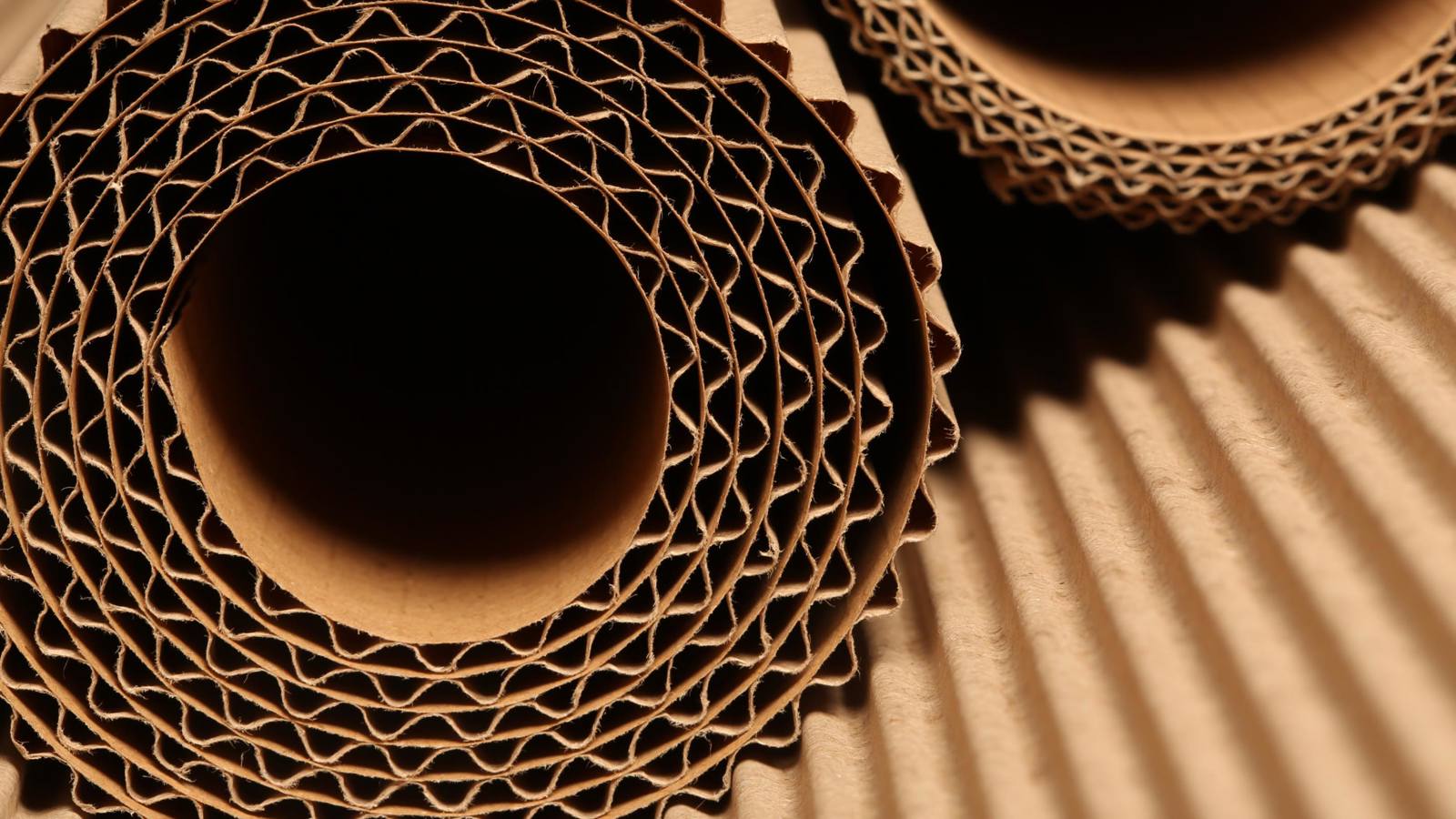
Why measure the mechanical properties of paper and cardboard?
The measurement of mechanical properties in paper and cardboard is essential in the global packaging industry, where corrugated cardboard, valued for its strength, affordability, and recyclability, is extensively utilised.
Box-makers conduct a range of tests to optimise strength, minimise material costs, and reduce weight. Stable Micro Systems Texture Analysers stand apart from traditional crush testing equipment, providing comprehensive graph analysis and optional synchronised video capture to thoroughly identify failure mechanisms, ensuring dependable, repeatable, and objective testing.
Their versatility extends to various paper, cardboard, and box tests, including crush, tensile, puncture, and flexure. These tests, customised to meet the specific properties of the final product, are particularly crucial for "compression boxes" designed for stacking. They assess vital factors like crush strength, robustness, and the preservation of protective properties under specified conditions, guaranteeing product quality and customer satisfaction.
The scientific measurement of mechanical properties in paper and cardboard is a fundamental practice that underpins packaging quality, performance, and cost-efficiency, while safeguarding product integrity and the reputation and profitability of manufacturers.



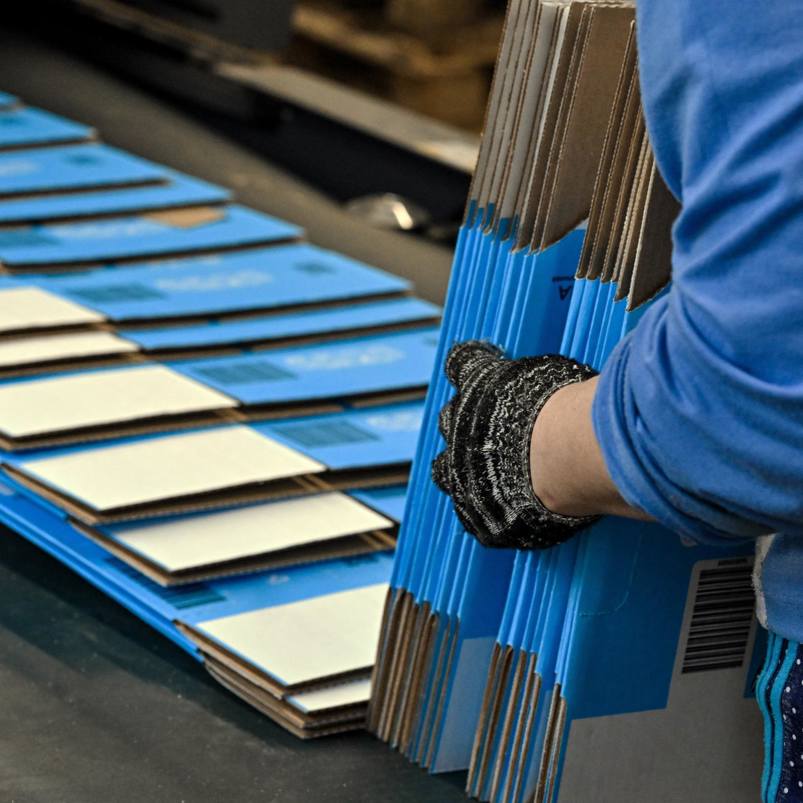
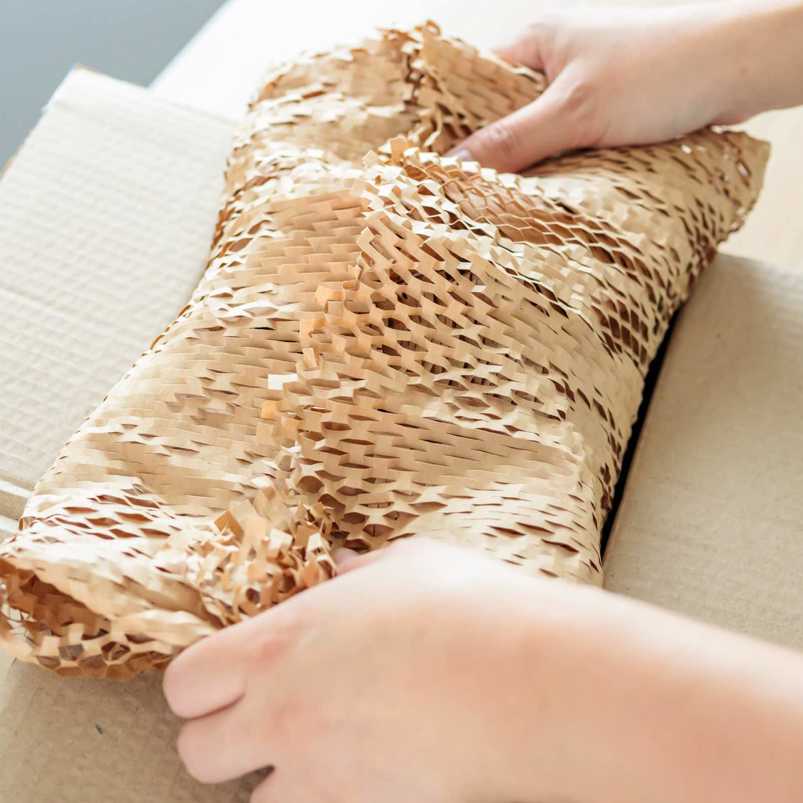

How a Texture Analyser can be applied to paper and cardboard mechanical property measurement?
The manufacture and development of paper and cardboard hinge on understanding and optimising mechanical properties to achieve products that meet specific demands, from printability to packaging strength. Leveraging a Texture Analyser for the measurement of these properties provides several key benefits:
- Quality control and assurance: Regular testing for parameters like tensile strength, tear resistance, and bending stiffness ensures that the produced paper and cardboard consistently meet required specifications.
- Product development and innovation: For those developing new types of paper or cardboard, or modifying existing ones, understanding how changes in pulp composition, additives, or manufacturing processes affect mechanical properties is crucial. A Texture Analyser provides this empirical data.
- End-use suitability: Different applications, from writing paper to shipping boxes, have distinct mechanical needs. Testing ensures products are fit-for-purpose, be it flexibility for paper or compression strength for cardboard.
- Printability and coating assessment: Paper's surface texture and stiffness can influence how ink adheres and dries. By analysing these parameters, manufacturers can optimise print quality and coating adherence.
- Validation of product claims: If a cardboard is marketed as "extra strong" or paper as "tear-resistant", these claims can be validated using a Texture Analyser, reinforcing credibility.
- Recycling and sustainability evaluations: As recycled content in paper and cardboard increases, it's vital to ensure that mechanical properties remain robust. Testing can inform the balance between sustainability and product performance.
- Moisture content influence: Paper and cardboard properties can change with varying moisture levels. By understanding this relationship, manufacturers can offer storage recommendations and ensure product stability under various conditions.
- Optimised processing parameters: The effects of various manufacturing stages, such as calendaring or corrugation, on mechanical properties can be quantified, leading to optimised processing.
- Compliance with standards: Different regions or applications may have set standards for paper and cardboard properties. Consistent testing ensures adherence to these benchmarks.
- Predictive modelling: Understanding the mechanical behaviour of paper and cardboard allows for predictive modelling of their performance under specific scenarios, such as long-term storage or exposure to environmental factors.
- Economic efficiency: By pinpointing the exact mechanical requirements needed for a specific application, manufacturers can avoid resource wastage, leading to both cost savings and a reduced environmental footprint.
- Feedback loop: Regular testing can act as feedback for raw material suppliers, ensuring the quality of pulp, recycled content, or additives aligns with desired product specifications.
Incorporating a Texture Analyser into the paper and cardboard manufacturing and development process offers a data-driven approach. This approach not only guarantees product quality but also fuels innovation, ensures regulatory compliance, and paves the way for products that resonate with both environmental concerns and end-user requirements.
Typical measurements
A Texture Analyser, equipped with specific probes and fixtures, can evaluate a wide range of mechanical properties pertinent to paper and cardboard. Some of the key mechanical properties that can be assessed for these materials include:
Tensile strength
Measures the maximum force that paper or cardboard can withstand while being stretched before rupture. This also includes the elongation at break.
Fold endurance
Assesses the number of folds or bends paper or cardboard can withstand before breaking, important for materials expected to undergo repeated folding, like maps or brochures.
Puncture/penetration resistance/burst strength
Measures the force required to puncture the material, indicating its durability.
Tear resistance
Quantifies the force required to initiate or continue tearing through a sample.
Compressibility
Measures how paper or cardboard responds to compressive forces and its recovery after compression.
Creep
Measurement of the slow, time-dependent deformation or flow of the material under a constant load or stress.
Edgewise strength
Measures the strength of the packaging material when it is subjected to a force or load applied perpendicular to its flat surfaces or edges. This property is critical for packaging materials used in applications where stacking, handling, or compressive forces act on the packaging from the sides.
Bending/flexural strength/stiffness
This tests the strength of the material when bent, indicating its resistance to deformation under bending. This is particularly significant for products like postcards or packaging materials that must maintain a certain shape.
Peel strength
Relevant for layered or coated papers, it measures the force required to separate layers.
Friction coefficient
Evaluates the slip resistance of paper, important for printability and machine processing.
Compression testing/ Crush strength and resistance
For cardboard packaging, this tests how much weight or force the material can endure without collapsing.
Wet strength testing
Evaluates the paper's strength when it's wet, crucial for products like tissue papers or beverage cartons.
Wet strength
Evaluates the strength of paper or cardboard when it's wet, crucial for products exposed to moisture.
These measurements are critical in various sectors, from the printing industry to packaging development. Ensuring the right mechanical properties ensures product quality, durability, and performance in end-use applications.
Case studies
Whether its providing the solution for Jimei University to measure the tensile strength of their glutinous rice paper, allowing Borregaard AS to develop a microfibrillated cellulose adhesive for corrugated paperboards or offering the Limerick Pulp and Paper Centre a means to develop Superhydrophobic, strong and transparent paper made from cellulosic fibers with suitable tensile strength, a Texture Analyser is adaptable and flexible in its application to measure the bespoke mechanical properties of your product and then enable its quality to be controlled in your manufacturing to guarantee consistency and customer satisfaction.
With deep expertise in the physical property measurement of materials, we’re well equipped to support innovation in this sector – just ask our customers.
Probes and attachments for measuring the mechanical properties of paper and cardboard
A wide range of probes and attachments can be integrated with our instruments, allowing testing to be precisely adapted to the material or product under evaluation. Applications include penetration tests to measure puncture resistance, bending tests to compare cardboard rigidity or tearing test employed to measure paper tearing resistance.
Over the years, we have collaborated with leading scientists and organisations across diverse industries to design and refine fixtures that meet highly specific testing requirements. When a suitable solution does not already exist, we develop one – expanding our portfolio of Community Registered Designs and reinforcing our commitment to innovation in solving complex testing challenges.
The examples provided illustrate a selection of specialised attachments and commonly performed measurements in this application area. This list is not exhaustive; a wide range of additional options are available for the testing of food packaging. All instruments in the Texture Analyser range can be used to perform the tests described.
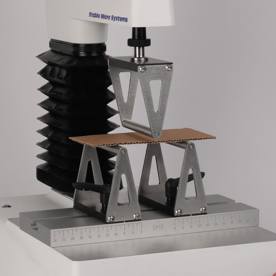
Three Point Bend Rig
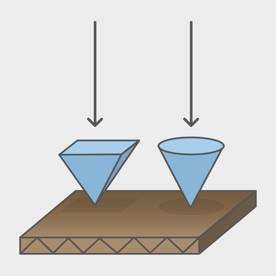
Puncture test
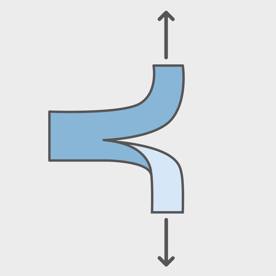
Tear 'Trouser' Test
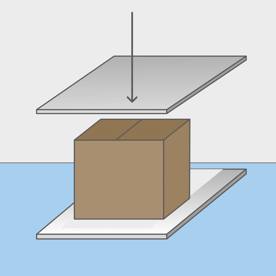
Box creep test
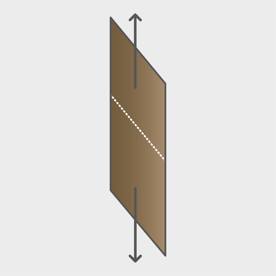
Perforation tensile test
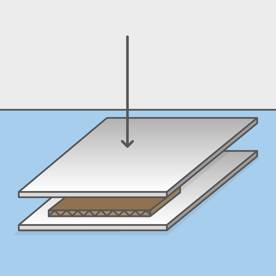
Flat crush test
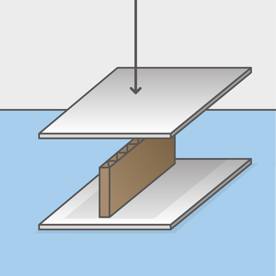
Edge Crush Test
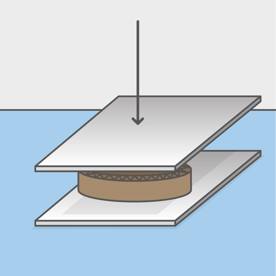
Ring crush test
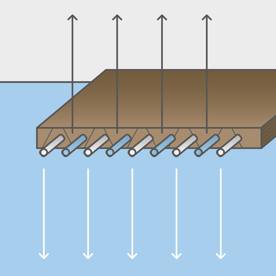
Pin adhesion test
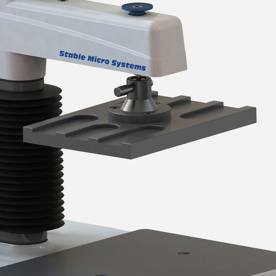
Rectangular Compression Platen
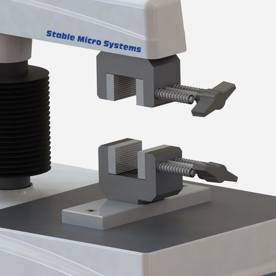
Tensile Grips
Test methods
Exponent Connect software includes a comprehensive range of test methods for paper and cardboard products , all instantly accessible at the click of a button. We streamline your texture testing process, ensuring faster access to methods and ready-to-use analysis files for your product properties.
Using the Texture Analyser for new paper and cardboard material and product ideas
The paper and cardboard industries are undergoing transformations to meet environmental sustainability goals, technological advancements, and evolving consumer demands. Here's a look at some of the newer concepts and product ideas, and how a Texture Analyser can be implemented in their development:
Tree-tree paper
Utilisation of non-traditional raw materials like agricultural residues (straw, husks), bamboo, or bagasse to produce paper, reducing the dependence on tree-based pulp.
Microfibrillated cellulose (MFC)
Incorporating MFC to enhance strength, barrier properties, and reduce weight.
E-ink enabled paper
Integration of electronic ink displays in paper or cardboard, creating dynamic and changing displays for packaging or signage.
Anti-microbial packaging
Cardboards treated with antimicrobial agents to ensure food safety and extend shelf life.
Edible packaging
Cardboard or paper-based packaging solutions that can be consumed along with the product they encase.
3D moulded pulp packaging
Using pulp moulding processes to create three-dimensional packaging structures that can replace plastics in some applications.
Reusable or returnable packaging
Designing packaging solutions with the intention of multiple uses or returns to the manufacturer for refilling.
Paper electronics
Utilising paper as a substrate for flexible or disposable electronics, such as sensors, displays, or even batteries.
Active packaging
Cardboard integrated with technologies to monitor food freshness, control humidity, or interact with consumers.
Water- and grease-proof paper
Development of environmentally friendly treatments or coatings that repel water and grease, useful for food packaging.
Lightweighting
Reducing the weight of paper and cardboard products without compromising their strength and functionality.
Recyclable and compostable laminates
Development of environmentally friendly laminates that can either be recycled or composted.
Eco-friendly disposable tableware
Biodegradable or compostable plates, cups, and utensils made from paper or cardboard.
Seed-embedded papers
Papers embedded with seeds, allowing them to be planted after use, sprouting plants or flowers.
Corrugated furniture
Lightweight, temporary furniture solutions made primarily from corrugated cardboard.
As environmental concerns gain prominence, the paper and cardboard industry will likely continue to focus on sustainable solutions, innovative applications, and products that reduce our reliance on non-renewable or non-degradable materials.
Recent research
Here is some recent interesting research in paper and cardboard product development using the Texture Analyser:




